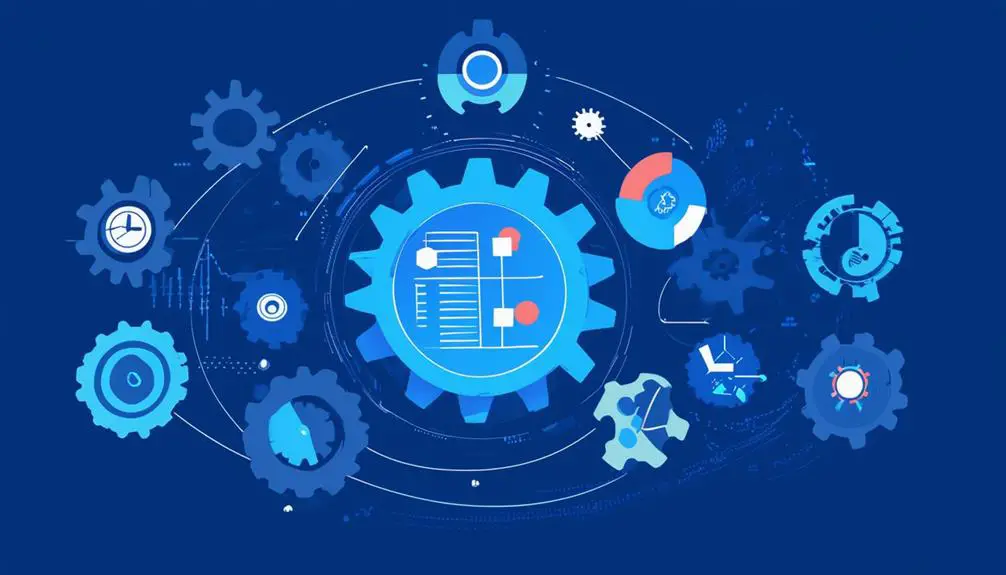Why Phased Implementation is Crucial
Just like an architect meticulously plans blueprints before construction begins, having a clear framework is essential for successfully navigating change. Breaking down the implementation process into distinct phases not only simplifies the journey but also helps in managing expectations among all stakeholders involved. This structured approach fosters collaboration and trust, yet its potential is often overlooked. How can you ensure that each phase is executed effectively, leading to sustainable transformation? Exploring this question can uncover valuable insights for your next endeavor.
Navigating the Implementation Journey
Embarking on the implementation journey can sometimes feel like maneuvering through a complex maze, with each twist and turn presenting unique challenges and opportunities for growth. As you progress, acknowledging that implementation challenges are inevitable can help you embrace them rather than resist. Gathering user feedback along the way acts as a compass, guiding your decisions and adjustments to enhance the overall effectiveness of your initiative.
The Art of Engaging Stakeholders
Engaging stakeholders effectively throughout the implementation journey is crucial, as their support and input can significantly influence the success of your project. To achieve this, consider implementing strategies such as:
- Establishing clear communication channels tailored to stakeholders’ needs.
- Soliciting regular feedback to ensure their voices are heard and valued.
- Creating opportunities for open dialogue to allow stakeholders to express concerns and ideas freely.
- Adapting engagement efforts based on the unique interests and influence of each stakeholder.
Efficiently Managing Implementation Timelines
Successfully managing implementation timelines requires a delicate balance between planning and execution. Remaining flexible for timeline adjustments, ensuring resource allocation aligns with project demands, and maintaining clear communication are essential components for navigating the complexities of implementation effectively.
Key Strategies for Successful Roll-Outs
Strategic planning and execution are pivotal for successful roll-outs, necessitating tailored approaches that resonate with your organization’s unique dynamics. Consider implementing strategies such as:
- Conducting Pilot Programs to test concepts in controlled environments and gather feedback.
- Utilizing Graduated Schedules to roll out changes incrementally and reduce overwhelm.
- Involving Stakeholders Early to foster buy-in and address concerns proactively.
- Establishing channels for Continuous Feedback to enhance user experience and make necessary adjustments.
Preparing for Smooth Transitions
Smooth transitions are crucial to ensure that the changes implemented do not falter at the finish line. Effective transition planning involves allocating resources wisely, defining responsibilities clearly, and ensuring accountability and ownership are in place. Anticipating challenges, creating a robust support system, and proactively addressing uncertainties can help you navigate transitions with confidence.
Sustaining Change for the Long Haul
Sustaining change over time requires a strategic approach beyond the initial implementation phase. Monitoring progress, reinforcing new habits, celebrating milestones, and adapting strategies based on feedback are key actions to ensure lasting transformation.
Answering Your Burning Questions
Common Pitfalls During Each Implementation Phase
From stakeholder resistance to scope creep, each implementation phase presents its own set of challenges. Addressing resource limitations, timing issues, and communication failures is crucial to avoid implementation missteps and keep your team motivated.
Measuring Success at Each Phase
Setting clear success criteria and tracking performance metrics at each phase allows you to adjust strategies and stay on course toward your goals. This approach ensures that you are on the right path and making progress towards achieving your objectives.
Involving Stakeholders in the Testing Process
Involving diverse stakeholders in the testing process enhances engagement and provides valuable insights for shaping the implementation. Strategic testing strategies that incorporate stakeholder feedback foster a sense of ownership and drive successful change.
Tools for Tracking Implementation Progress
Utilizing project management software, dashboards, and timelines can help track implementation progress effectively. These tools enhance clarity, foster collaboration, and ensure alignment with your goals throughout the implementation process.
Integrating User Feedback Effectively
Establishing feedback loops during user onboarding creates an iterative design process that incorporates user insights to shape the experience. This approach leads to a product that resonates with users and empowers them to engage with the changes effectively.
Parting Words
By embracing a phased implementation approach, you’re not just managing change; you’re orchestrating a symphony of collaboration and innovation. Each phase is a vital pit stop that allows you to gather feedback, adjust your course, and propel your organization towards success. So, buckle up and navigate the complexities of change with clarity, confidence, and a sprinkle of excitement that inspires all those involved!



